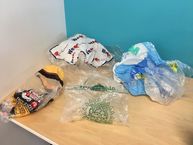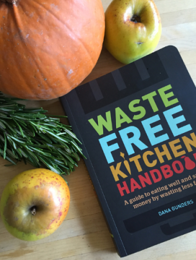|
Today, people are both buying more and discarding more – causing a pileup of clothing that’s clogging environmental health. This cycle of buying, discarding, and buying again is a result of “fast fashion” – the mass production of low-cost clothing in order to keep up with the ever-changing fashion trends – and it’s having a devastating effect on the planet.
In fact, some even claim the fashion industry is the second largest polluter in the world, second only to oil producers. This can be surprising as we often imagine pollution as dark, billowing smoke from a coal power plant, not as the shirts on our backs. From toxic chemicals used in cotton production and textile dyes to polyester microfibers ending up in waterways, the reality is the clothing we wear has a massive environmental impact.
Here are some tips to help reduce the environmental cost of your clothes – and look excellent doing it:
-
Buy less. And when you do buy, practice buying wisely. Purchase only what you need and seek out quality, durable items that will last.
-
Try renting. Instead of buying something new for a special event that you’ll only use once, rent your look. You’ll remain fashion forward and environmentally conscious. Try out these sites: Style Lend & Rent the Runway.
-
Buy secondhand. It’s an awesome way to get fresh threads for fast-fashion prices without contributing to the harmful fast-fashion biz.
- Get crafty and try upcycling. Take those old t-shirts and make something new, like a bathmat!
- And lastly, donate. Give your unwanted clothes new life by donating them to organizations participating in the King County Threadcycle program.
|
Featured Tip #1: Dealing with Plastic Film and Plastic Bags
What should you do with all of that plastic film from your toilet paper packaging or new pillow? This type of plastic can be included with your clean and dry plastic bags and brought to a grocery store for recycling.
Featured Tip #2: Disposing of Hazardous Waste
Did you know many common household products are considered “hazardous waste”? Things like insect repellent, toilet bowl cleaner, disinfectants, hair dye, and glue can be harmful to our health and the environment, requiring special disposal. To find out how to best dispose of these products and many others, check out this handy list from the Local Hazardous Waste Management Program of King County, Washington.
|
|
 |
There are a few things more synonymous with the holiday season than food – LOTS of food. So how can you go about wasting less food when there seems to be so much of it everywhere?
-
Plan before you buy.. Consider how many guests you’ll have and how much of each menu item an average person will eat. It’s okay to make enough for leftovers as long as you know they’ll be eaten.
-
Avoid overserving food. Consider using smaller plates or serving utensils during your holiday festivities to help guests avoid serving themselves more than they need.
-
Utilize your freezer. Soups, cooked veggies, breads, pastries and cookies all freeze very well and can be thawed for later indulging. Be sure to label and date before freezing. Check out this helpful guide to freezing those holiday leftovers.
-
Get creative. Find recipes and tips that allow you to use your leftovers in new ways in the KC Food: Too Good To Waste Recipe Box.
-
Hand Off. Pack up and send leftovers home with guests!
-
Donate. Give any excess canned and dried foods to your local food bank.
 View short videos and recipes for Pozole and Chinese dumplings that include food waste prevention tips.
íDisfrute! Enjoy!
|
Winter often means an abundance of root vegetables, so what can you do with all of those carrots, parsnips, beets, and potatoes? There’s so many options! Try roasting them, pickling them, or making a stew.
 Want to become a pro at wasting less food in the kitchen? Reply to this email to submit an action that you take to waste less food and you’ll be entered into a random drawing for a copy of Waste Free Kitchen Handbook by Dana Gunders. The winner will be announced next month and have their tip to wasting less food shared with the King County Waste Less newsletter community.
|
|